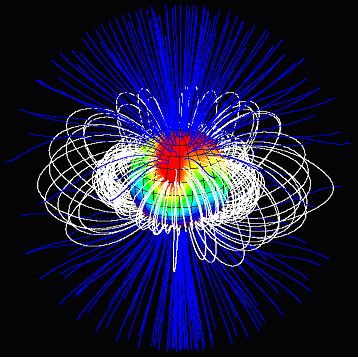Hi Frank,
I'd have to look at the Katirai book again to see where I departed from his
ideas. I know he did not mention anything to do with an EU model, that was my,
what I thought then, logical extension of his proposals. I don't think he
included an Oort sphere, just the clusters having a single star in the middle.
The first thing I did after a quick read was to look into the distance issue,
and some of the BAUT members filled me in on the standard methods, but I am
not convinced. The cosmic ladder looks very shaky, and it is at rung 7 where I
believe the big problems start, where they use color to infer absolute brightness,
and using that brightness to calculate distance. The color I believe is more to do with
fluorescence of the elements around a planet, and that is where I fall off the ladder.
The Cepheids of rung 8 are not IMO, what they think they are, and they are so bright
because they are closer than assumed. Then you are on to supernovas, which again are not
what they think they are, and then red shift, which I discount totally.
Even nearer distances could be off, if it is found that numerous plasma bubbles
exist around the solar system, or the Oort cloud, or anywhere between us and the
target. Plasma lensing is an accepted phenomena in radio astronomy too, though I
think there are probably other variables that may affect the light more, and
differently, than so far proposed. We don't know the diversity of the electrical
phenomena out there.
Plasma Theory of 'Gravitational Lensing' of Light
http://www.plasmaphysics.org.uk/research/lensing.htm
Then there are effects at plasma or dielectric boundary layers, and a lot of other
stuff that gets beyond my comprehension, but makes me wonder how it affects all
the large distance calculations at optical or radio frequencies.
So, I will not discount Katirai and his distance questions just now.
I think radio astronomy is going to be the method that will prove or
disprove the Katirai model. The EVLA is beginning observations that
should be able to tell us if an object is a star or a planet. Some
previous work is already making me wonder.
An image of the Sun, clearly showing, in my interpretation, the dual
internal tori.

So can we see 'sunspots' on Alpha Centauri, or any other star? I'm hoping
the EVLA can answer that one.
https://science.nrao.edu/facilities/evla/index
The surprising magnetic field of a red dwarf.(20 LY distant) Almost looks like the Earth field.

However, the result obtained was not what the researchers were expecting. Whereas existing models predict that the chaotic motion of matter inside the star (which is able to carry away the energy produced in its center) should form a complex magnetic field with little organized structure, the structure of the magnetic field of this star appears to be as straightforward as that of a bar magnet.
Maybe it is not a Sun?
In order to change an existing paradigm you do not struggle to try and change the problematic model. You create a new model and make the old one obsolete. -Buckminster Fuller


 - you show a solar antenna [?] diagram and ancient images of the Sun. Notice that that would be polar views of the Sun. The ancient Sun was Saturn, which was seen from its south pole.
- you show a solar antenna [?] diagram and ancient images of the Sun. Notice that that would be polar views of the Sun. The ancient Sun was Saturn, which was seen from its south pole.

